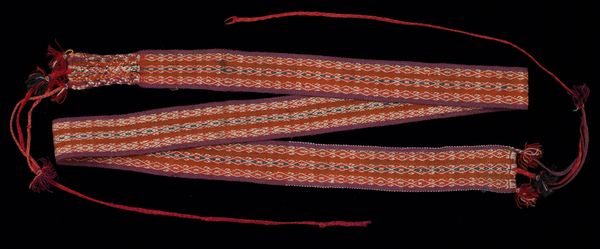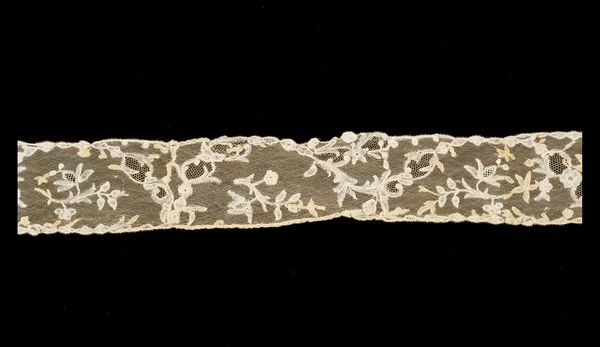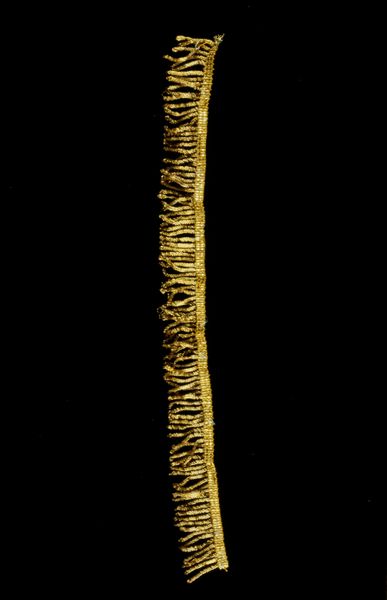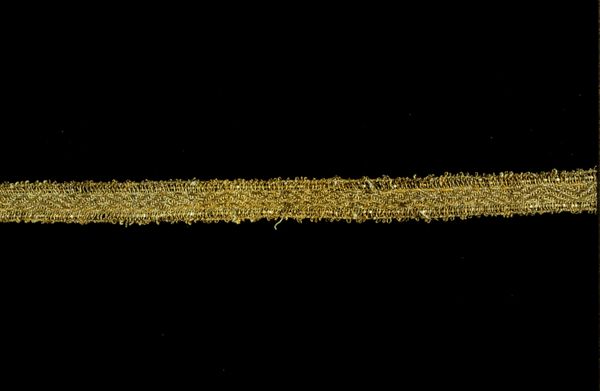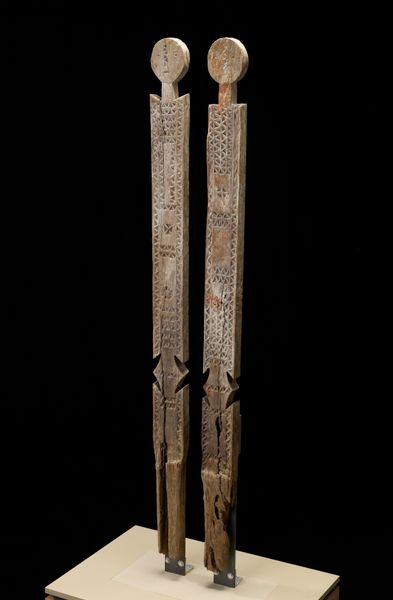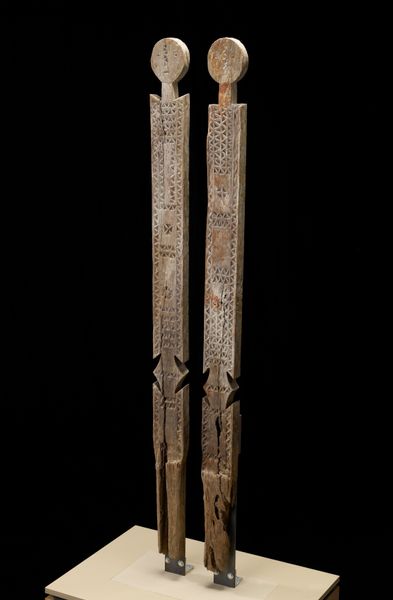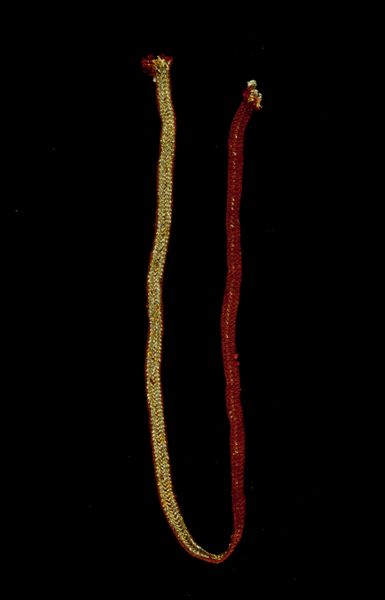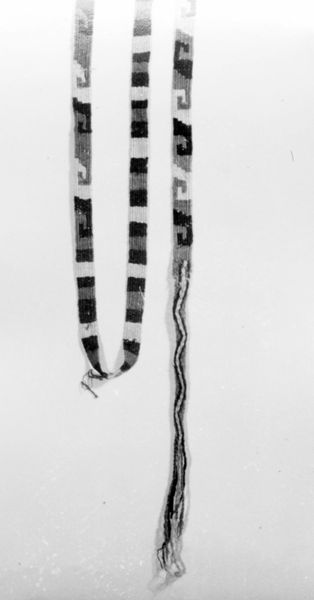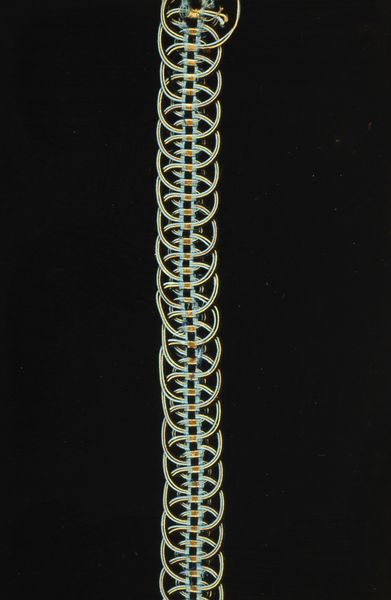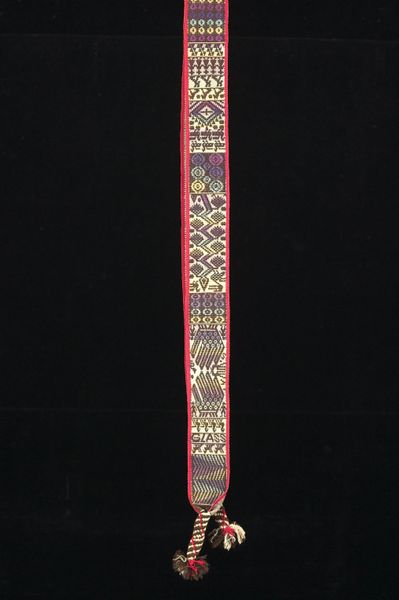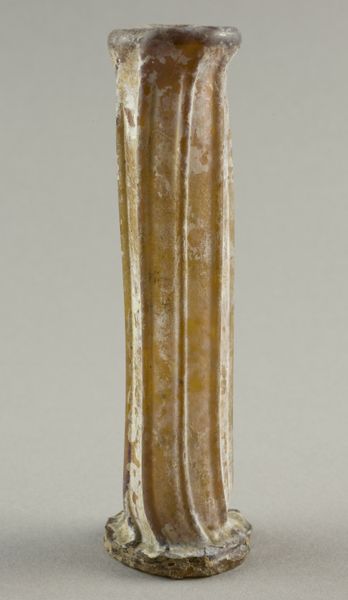
fibre-art, textile
#
fibre-art
#
sculpture
#
pattern
#
textile
#
united-states
#
decorative-art
Dimensions: 1 x 66 in. (2.54 x 167.64 cm)
Copyright: Public Domain
Editor: Here we have "Trim," a textile work from around the 20th century, created by the Sisters of the Order of St. Benedict. It strikes me as remarkably delicate and ornate. Given its placement in a museum, what do you think about its public function and potential meanings? Curator: Well, placed within the context of a museum, it shifts from merely functional trim to a potential symbol of domesticity and craft within the religious order of the Sisters of St. Benedict. Who would see it? Would it have been reserved only for other sisters? Does the pattern have a significance tied to the Order's practices, and can this decorative art offer insights into the values of the women who crafted it? Editor: That's interesting – thinking about who this was intended for is something I hadn't considered. The symmetry feels so deliberate. Is this attention to visual detail typically seen in the order’s textiles? Curator: Symmetry can be a significant marker of cultural value. This is not necessarily "high art," but "Trim" reveals cultural and aesthetic value systems from a particular time and social sphere. Understanding the Order's role and their decorative arts production would show whether symmetry aligns with certain values upheld by them, such as order or religious significance, but what could this reflect about gender roles and devotional work in America? Editor: So, the political power comes from appreciating and uplifting the everyday work of these sisters, positioning them beyond simply ‘crafty nuns’? Curator: Exactly! It resists easy categorization and demands attention to the social context and overlooked artistry within a specific religious community. What initially appears as decorative takes on more political resonance, if we begin to view the object, and its function as something intrinsically intertwined. Editor: I see it differently now – thanks to your expertise. This piece isn't just about aesthetics; it's about celebrating the contributions of a group that’s often sidelined in broader historical narratives. Curator: I'm glad this object encouraged you to appreciate its role as a powerful tool for shifting institutional narratives, prompting a re-evaluation of what deserves attention and how value is ascribed.
Comments
No comments
Be the first to comment and join the conversation on the ultimate creative platform.
